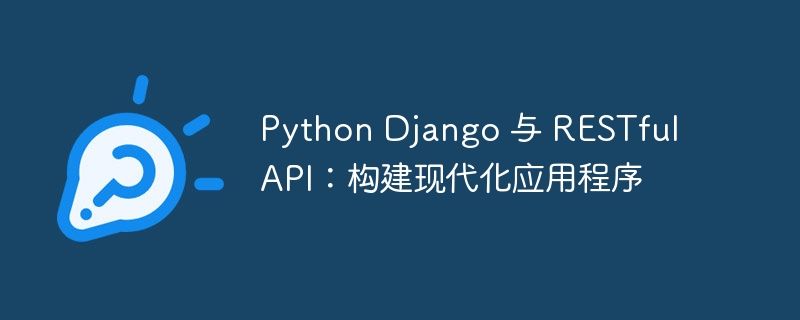
Advantages of Django
-
Model-View-Template (MTV) architecture: Django Follows MTV Architecture, which separates application logic, data model and user interface, simplifying Development and maintenance.
-
Built-in CRUD operations: DjanGo simplifies data management by providing out-of-the-box support for create, read, update, and delete (CRUD) operations.
-
Security Features: Django includes built-in security features such as cross-site request forgery (CSRF) protection, sql injection protection, and session management.
RESTful API
RESTful api uses a stateless protocol based on Http to provide a well-defined set of operations for interacting with WEB services. Its main advantages include:
-
Resource-oriented: RESTful API represents application data as resources, enabling applications to manipulate data in a unified way.
-
Stateless: Each request of the RESTful API is independent and does not save any state information, thus improving scalability and performance.
-
Standardization: RESTful APIs follow HTTP standards, including status codes, headers, and methods, simplifying communication between clients and servers.
Combining Django with RESTful API
Combining Django with a RESTful API provides the following benefits:
-
Easy to develop RESTful API: Django provides extensions such as REST framework, making it easy to develop RESTful API.
-
Data management efficiency: Django’s model-view-template architecture complements the resource-oriented design of RESTful API, simplifying data management.
-
Scalable and robust: Both Django and RESTful APIs provide scalability and robustness, enabling applications to handle large volumes of traffic and concurrent requests.
Implementation
To combine Django with a RESTful API, you can follow these steps:
- Install Django REST framework.
- Create a model to represent the application's data.
- Use REST framework to write views to handle RESTful requests.
- Associate views with URL patterns.
- Use the REST framework serializer to convert data between formats such as JSON or XML.
case study
A typical case study is creating an e-commerce website. Using Django, you can create data models to store products, orders, and customers. Views can then be written using the Django REST framework to allow users to create, read, update, and delete these resources through a RESTful API. This will enable mobile apps, websites, and other services to interact with application data.
in conclusion
python Django and RESTful APIs are powerful tools for building modern applications. Combining these two tools provides numerous benefits, including ease of development, data management efficiency, and scalability. By following the above steps, developers can create fully functional, efficient, and easy-to-use applications that meet the complex needs of today's web development.
The above is the detailed content of Python Django and RESTful APIs: Building modern applications. For more information, please follow other related articles on the PHP Chinese website!






